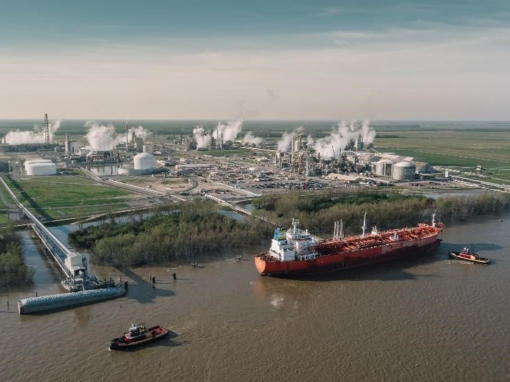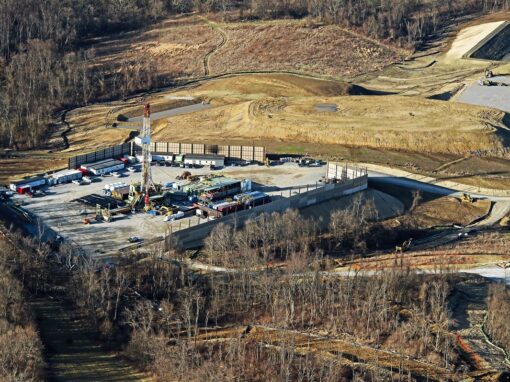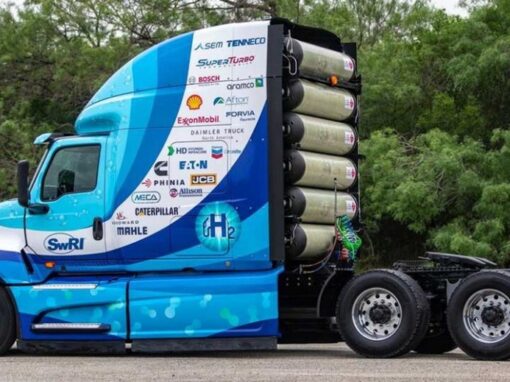April 14, 2025
by Charlie Sabgir
From the air we breathe to the products lining our shelves, hydrogen is indispensable to modern life. The world’s most abundant element is vital to the clean energy transition and its ability to decarbonize the chemical industry is significant. The United States produces approximately 10 million metric tons (MMT) of hydrogen annually, and the vast majority serves as feedstock for products such as fertilizer and ammonia, among others. However, the chemical industry remains carbon-intensive due to the continued preference for hydrogen produced via steam methane reforming (SMR) and the use of natural gas as a heat source. Transitioning to clean hydrogen alternatives presents a promising solution: dramatically reducing the chemical sector’s carbon footprint while securing a reliable energy source. Leading chemical companies are embracing this transition by manufacturing vital components for fuel cells and electrolyzers that support hydrogen production.
Hydrogen in the Chemical Industry
Hydrogen, a fundamental element with high bonding potential, has an expansive role in chemical manufacturing. As a feedstock, hydrogen is vital to the production of primary chemicals, including ammonia, methanol, ethylene, benzene, and propylene. Notably, ammonia has potential as both a domestic feedstock and an export commodity, providing a promising off-take market for hydrogen producers.
Altogether, roughly 68% of U.S. hydrogen is used for petroleum processing, while approximately 21% is utilized as fertilizer feedstock. However, domestic manufacturing continues to rely heavily on carbon-intensive “grey” hydrogen. Transitioning to lower-emission production methods—such as electrolysis, pyrolysis, or carbon capture, utilization, and storage (CCUS)—presents an opportunity for significant carbon dioxide (CO2) reductions. Studies indicate that switching to renewable hydrogen could reduce emissions from these five primary chemicals by 32%.
Beyond feedstock applications, hydrogen offers a viable alternative to carbon-intensive natural gas used as a heat input for chemical manufacturing processes. For high-temperature applications where electrification faces economic and technical barriers, hydrogen may be especially valuable. Unlike natural gas combustion—which releases CO2—hydrogen combustion produces only water vapor, significantly lowering emissions. The potential for a reduced footprint is immense: substituting natural gas with either renewable-powered electrification or electrolytic hydrogen could cut chemical sector emissions by up to 28%, with high-value chemicals seeing more considerable reductions. Illustrating this concept’s viability, the DOE Industrial Demonstrations Program recently awarded a Baytown, TX project to retrofit natural gas equipment with hydrogen to avoid 2.5 MMT of annual carbon emissions.
FCHEA members are supporting hydrogen production through the fabrication of key components—including proton exchange membranes (PEM), fluoropolymers, and specialized coatings—that support the hydrogen value chain from production to storage to transportation. These leaders are facilitating access to and adoption of cleaner hydrogen technologies that can significantly reduce the carbon footprint of the chemical industry.
Chemical Industry Leaders Supporting the Hydrogen Ecosystem
Chemours, based in Delaware, produces Nafion™ membranes which enable proton exchange functionality in PEM electrolyzers and fuel cells. These membranes support renewable energy generation, energy storage, and efficient hydrogen production. Chemours recently announced a strategic alliance with Energy Fuels Inc. to support domestic rare earth and critical mineral supply chains. This partnership could benefit the hydrogen industry by ensuring access to the critical minerals needed for electrochemical components and catalysts used in production technologies.
W.L. Gore, another Delaware-based manufacturer, manufactures GORE-SELECT® membranes that support PEM fuel cell performance in heavy-duty vehicles, among other applications. These reinforced membranes provide durability and power density throughout an extended life cycle, presenting an alternative to traditional diesel engines. The company also manufactures GORE® PEM M275.80 for water electrolysis, designed to lower the levelized cost of hydrogen (LCOH) and support multi-GW water electrolysis systems. This membrane improves stack efficiency and voltage levels, ultimately leading to higher hydrogen output.
Another FCHEA member advancing this space is AGC Chemicals, whose fluoropolymer products support multiple stages of the hydrogen value chain. Their FORBLUE™ S-Series membranes are engineered for the selective filtration of protons, enhancing PEM electrolysis. AGC also supports anion exchange membrane (AEM) electrolysis with its FORBLUE™ Selemion membranes, used as AEM separators. For hydrogen storage and transport applications, ACG provides LUMIFLON® coatings for liquid hydrogen tanks and AFLAS® Fluoroelastomers for sealing components.
Agfa, a Belgian-German enterprise, produces Zirfon hydrogen separator membranes that improve alkaline electrolyzer efficiency by reducing energy consumption, lowering capital and operational costs, and increasing uptime. Stiesdal Hydrogen recently chose the Zirfon membrane for its HydroGen alkaline water electrolyzers, citing Agfa’s “market-leading durability” and “stable operation.”
Barriers, Opportunities, and the Road Ahead
Hydrogen can significantly reduce emissions and transform the chemical industry into a more sustainable and efficient sector. The FCHEA members highlighted above, through their production of materials for fuel cells and electrolyzers, are driving innovation across the hydrogen value chain and helping make that transformation possible.



